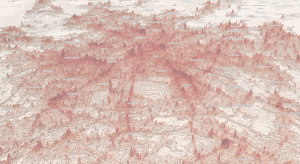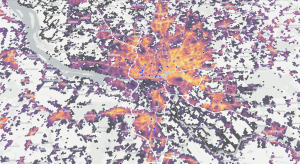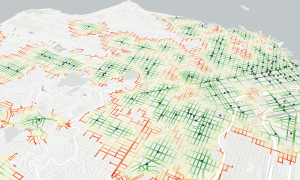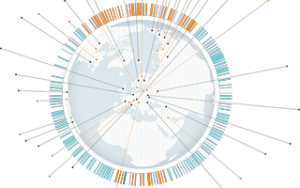
When it comes to location assessment, even the most state-of-the-art retail businesses still rely on methods prone to subjective biases and errors. This has to change. And it can change, with the help of science. Retail businesses can now take the wheel when it comes to predicting the visitor number and even the turnover of potential new branch locations.
Gravitational Models for Retail
Already in the 1960s, business and marketing professor David Huff developed a mathematical model aimed at identifying the trading area surrounding a retail location, potentially freeing companies from conducting extensive surveys or field studies. He borrowed the main idea from Newton’s law of gravitation: the attraction between two bodies is proportional to their masses and inversely proportional to the squared distance between them. By treating retail locations as bodies with mass attracting customers, the law of gravitation can be effectively applied to the realm of branch network planning.
But why do we think it is worth taking a look at this decades-old idea again? While it never fell completely out of fashion, it didn’t experience a real breakthrough either. Today’s achievements in the science-driven discipline of location intelligence and the modern computational power allow for an effortless and effective application of the Gravitational Model that was unthinkable previously. For retail companies, new insights are becoming available at the push of a button, without having to consult geographers or releasing large budgets.
Geospatial Insights Made Easy
How does it work in practical terms? Well, it all starts with travel time calculations, because this provides a measure of the distance between a branch location and its potential customers. What’s even more interesting is that you can apply the Gravitational Model to your own branch network, effectively addressing cannibalization effects and your competitor’s network. The results display an objective representation of catchment areas with visiting probabilities for both entities:
From these basic steps, the application of the Gravitational Model can and must be fine-tuned in accordance with the individual business strategy. Retail companies with already existing branch networks can leverage their proprietary data on sales, transaction and customer numbers to test the first predictions of the Gravitational Model against real numbers. This allows for the optimization of multiplicative coefficients and exponents in its formula, resulting in the most realistic outputs for potential new locations.
Likewise, the sharper the image of one’s own target group, the more accurately statistical data can be leveraged, and the more efficiently transport and attractiveness variables can be determined. It makes a significant difference if your customers are teenagers traveling mostly by public transport looking for cheap groceries or seniors with cars and a demand for luxury goods. Once this framework fits, Gravitational Models will most likely be one of the tools of your choice when planning a new branch location.
Fascinating, isn’t it? If you’re interested in learning more about Gravitational Models for retail businesses, you can download our free Whitepaper. It’s where you can find a much more detailed description of the science behind these models and also see them in action in another real-life example.









